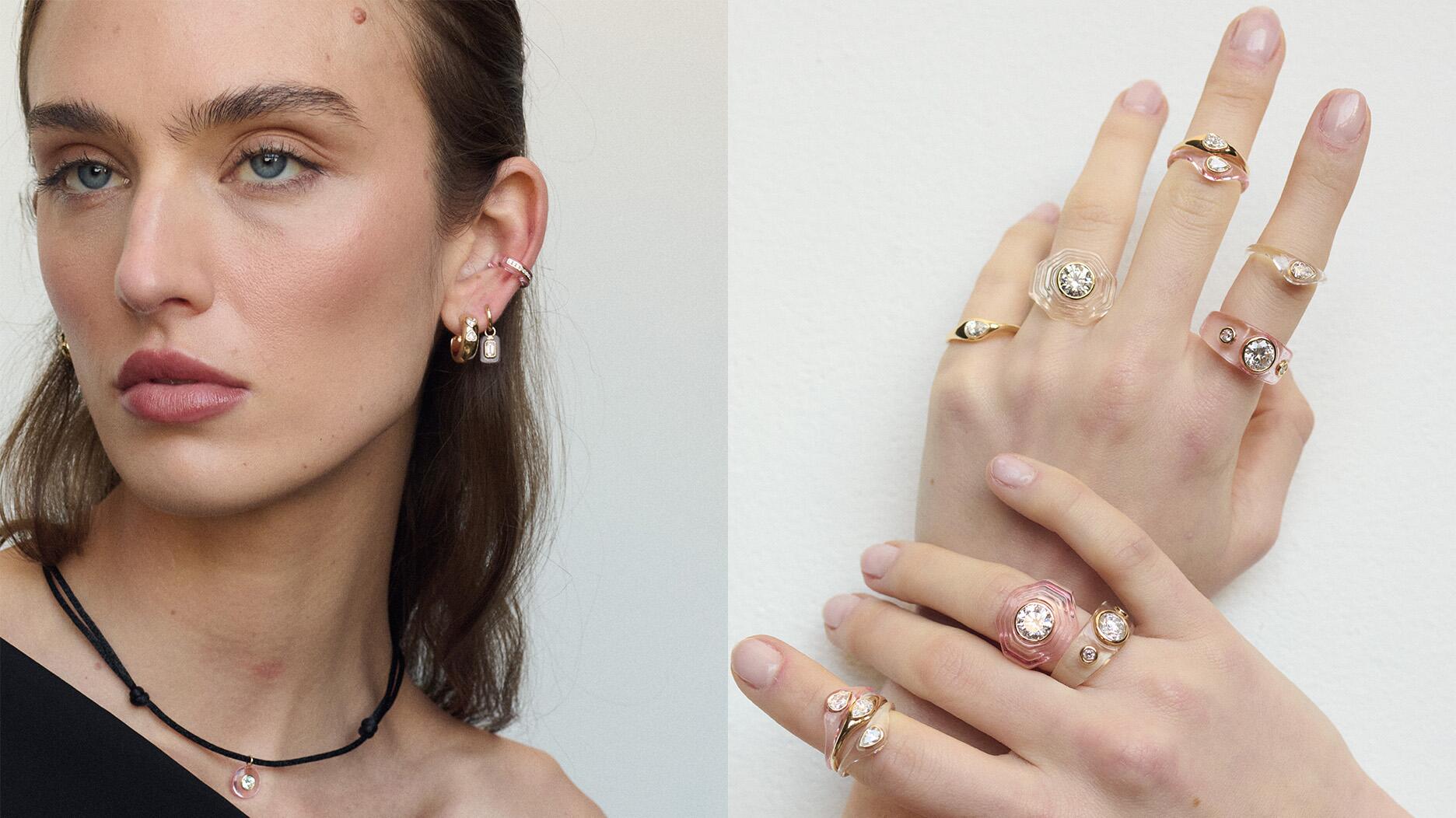Carlos Jose Hernandez and Joshua Zuazo were sentenced to life without the possibility of parole in the 2024 murder of Hussein “Sam” Murray.
GIA’s New Reports for Lab-Grown Diamonds Are Out
They include the same color and clarity terminology the lab uses for natural diamonds, a change announced earlier this year.

Branded as LGDR by GIA, the lab has created a total of four reports for lab-grown diamonds, two for colorless or near-colorless stones and two for colored diamonds.
The reports are digital-only, and each one has a QR code that links to a lab-grown diamond education page on the GIA website.
There is the:
— Laboratory-Grown Diamond Report, which has the 4Cs color and clarity specifications, and plotted clarity and proportions diagrams; it is for D-to-Z lab-grown diamonds 0.15 carats and above;
—Laboratory-Grown Diamond Report-Dossier, a less expensive version of the full report that does not include the plotted clarity diagram; it is for D to Z lab-grown diamonds between 0.15 and 1.99 carats;
—Laboratory-Grown Colored Diamond Report, which has GIA color and clarity specifications, and plotted clarity and proportions diagrams; it is for colored lab-grown diamonds 0.15 carats and above; and
—Laboratory-Grown Colored Diamond Report-Color Identification, a less expensive version of the above that includes color specifications only.
All four reports state which process was used to grow the diamond—chemical vapor deposition (CVD) or high pressure, high temperature (HPHT)—and whether the stone might have been treated post-growth to improve the color.
GIA started grading lab-grown diamonds in 2007 but, up until this year, had treated the stones differently than natural diamonds.
On its Synthetic Diamond Grading Reports, the lab did not give specific color or clarity grades for lab-grown diamonds, describing them instead as colorless (D-E-F range diamonds) or near colorless (G-H-I range) and applying only four clarity grades—VVS, VS, SI or I—instead of the 11 used for natural diamonds.
It did this, it said, because lab-grown diamonds are created, and usually treated, to have the highest color and clarity possible and thereby don’t exhibit the same range as natural diamonds.
GIA tweaked the reports last year, saying it would drop the word “synthetic” in keeping with the latest FTC guidance, before changing its stance again this year.
The lab announced in August it would begin using specific color and clarity grades for lab-grown diamonds, though it noted in the news release on the reports that using the same terminology for both “does not correlate to nature’s continuum of rarity.”
All lab-grown diamonds GIA grades are laser-inscribed with a report number and the words “Laboratory-Grown.” Diamonds already inscribed with the terms “laboratory-grown,” “laboratory-created,” “man-made,” “synthetic” or “[manufacturer name]-created” get only a report number.
GIA’s lab-grown diamond grading reports cost the same as their natural report equivalents, though they have a distinctive look by design.
The lab has its report prices listed on its website.
The Latest

Yood will serve alongside Eduard Stefanescu, the sustainability manager for C.Hafner, a precious metals refiner in Germany.

The New Orleans jeweler is also hosting pop-up jewelry boutiques in New York City and Dallas.

How Jewelers of America’s 20 Under 40 are leading to ensure a brighter future for the jewelry industry.

Set in a Tiffany & Co. necklace, it sold for $4.2 million, the highest price and price per carat paid for a Paraíba tourmaline at auction.


The jeweler’s “Deep Freeze” display showcases its iconic jewelry designs frozen in a vintage icebox.

Take luxury gifting to new heights this holiday season with the jeweler’s showstopping 12-carat sphene ring.

Roseco’s 704-page catalog showcases new lab-grown diamonds, findings, tools & more—available in print or interactive digital editions.

This year's theme is “Unveiling the Depths of the Ocean.”

In its annual report, Pinterest noted an increase in searches for brooches, heirloom jewelry, and ‘80s luxury.

Starting Jan. 1, customers can request the service for opal, peridot, and demantoid garnet.

The 111-year-old retailer celebrated the opening of its new location in Salem, New Hampshire, which is its third store in the state.

The new catalog features its most popular chains as well as new styles.

The filmmaker’s personal F.P. Journe “FFC” prototype was the star of Phillips’ recent record-setting watch auction in New York.

The new location in the Design District pays homage to Miami’s Art Deco heritage and its connection to the ocean.

Inflations, tariffs, and politics—including the government shutdown—were among consumers’ top concerns last month.

“Longtime favorite” presenters, as well as first-time speakers, will lead talks and workshops at the annual event in Tucson next year.

Silas Smith of Meridian Metalworks won the challenge with his pendant that blends Australian and American landscapes.

The sale of the 31.68-carat, sunset-hued stone was part of Sotheby’s first series of events and auctions in Abu Dhabi.

Most customers who walk into your store this month have made up their minds. Your job is to validate their choice, Emmanuel Raheb writes.

The collection features characters and motifs from Ukrainian folklore, including an enchanted mirror and a magic egg.

MatrixGold 3.11, the newest version of the jewelry design program, offers more flexibility, precision, and creative control.

The pavilion will be part of the 2026 JA New York Spring show, scheduled for March 15 to 17.

Kadet, a 1994 National Jeweler Retailer Hall of Fame inductee, helped grow the family-owned retailer in the Chicago area and beyond.

Billed as the world’s smallest wearable, Lumia Health’s new smart earrings have a health tracker subtly embedded in the back.

Don’t let those with December birthdays feel blue. Help them celebrate their month with blue zircon, turquoise, and tanzanite.

The new pink sapphire version of the piece dances with its wearer in the brand’s “Icons After Dark” holiday campaign.


























